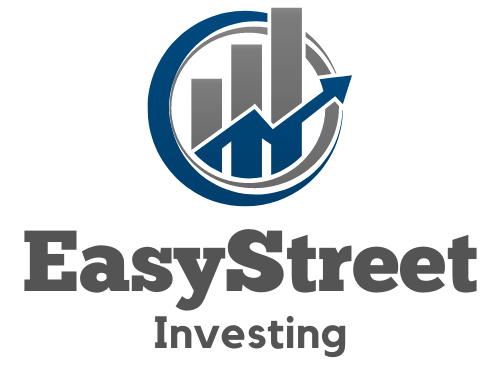Peer-to-peer lending is reshaping the investment landscape, offering a fresh avenue for both borrowers and investors to connect directly. This modern approach bypasses traditional financial institutions, setting the stage for potentially higher returns and democratized access to capital. If you’re eyeing an alternative to conventional investment options, this guide will walk you through the ins and outs of peer-to-peer lending platforms, risk assessment, and how to get started. Moreover, understanding the regulatory environment is crucial for both borrowers and investors to navigate this innovative financial landscape safely. This guide will also provide an overview of peertopeer lending regulations, ensuring that you are aware of the legal framework that governs these transactions. By equipping yourself with this knowledge, you can make informed decisions and maximize the potential of your investments.
Eager to diversify your portfolio? Look no further. As we delve into the world of P2P investments, expect clear insights on strategies that could maximize your earnings while minimizing exposure. We’ll chat about the importance of due diligence and how savvy investors are turning a pretty penny by funding others’ dreams. Stick around, and let’s demystify this game-changing financial frontier together – you might just find it’s the perfect fit for your investment cravings.
Important Highlights
1. Peer-to-peer (P2P) lending is a transformative financial model that leverages online platforms to connect borrowers directly with investors, effectively bypassing traditional banking institutions. This approach empowers individuals to lend money to their peers, often resulting in more favorable interest rates for borrowers and competitive returns for lenders compared to conventional saving accounts.
2. The investment risk associated with P2P lending is significantly distinct from traditional investments. Lenders must be adept at assessing credit risk, as they are directly exposed to the possibility of borrower default. However, many platforms mitigate this through diversification strategies such as splitting investments across multiple loans, which can lead to a more robust and resilient investment portfolio.
3. One of the standout features of P2P platforms is their accessibility; they often have lower entry barriers for investors, allowing individuals to start investing with smaller amounts of capital. This democratization of lending means that people who might not have had access to investment opportunities in the past can now participate actively in the lending market.
4. Regulatory oversight varies widely across different regions and countries, affecting the security and stability of P2P investments. Investors should thoroughly research and understand the regulatory environment of any platform they consider using, seeking information from reputable sources like the Securities and Exchange Commission (SEC).
5. Technological advancements have been crucial to the rise of peer-to-peer lending by enabling seamless transactions and sophisticated matching algorithms that pair borrowers with lenders efficiently. Despite technological sophistication, potential investors should remain vigilant about cybersecurity threats and prioritize platforms that demonstrate strong security measures and data protection protocols.
Understanding Peer-to-Peer Lending Platforms
Peer-to-peer lending, often abbreviated as P2P lending, operates on platforms that connect borrowers directly with investors. These online marketplaces provide a streamlined process for issuing loans outside the traditional banking system. By using advanced algorithms, these platforms assess the creditworthiness of borrowers and assign interest rates accordingly.
Lenders on these platforms can diversify their investments by funding a portion of multiple loans, spreading risk across various borrowers. This approach contrasts with traditional investments and offers the potential for higher returns due to the direct nature of the investment.
The Role of Credit Assessment in P2P Lending
Credit assessment is a critical component of peer-to-peer lending. Platforms utilize comprehensive data analysis to evaluate borrower risk profiles. They incorporate factors such as credit score, employment history, and debt-to-income ratio. Sophisticated credit reporting agencies, like Experian, often provide auxiliary support to these assessments.
Investors access these risk assessments before committing funds to ensure they make informed decisions. It’s essential for lenders to understand that while higher-risk loans might offer more attractive yields, they also carry an increased chance of default.
The Impact of Regulations on Peer-to-Peer Lending
Governing bodies have introduced regulations to oversee peer-to-peer lending practices. These rules aim to protect investors and maintain fair operation standards within the industry. Regulatory compliance is mandatory for platforms offering P2P lending services, ensuring transparency and ethical conduct in all transactions.
In the United States, for instance, the Securities and Exchange Commission (SEC) has set forth guidelines that P2P platforms must follow to safeguard stakeholders’ interests.
Investment Strategies in Peer-to-Peer Lending
Savvy investors employ various strategies when engaging in peer-to-peer lending to optimize returns while managing risk. Some adopt a conservative strategy by choosing only low-risk loans, whereas others may seek balance by mixing loan grades in their portfolio. Moreover, reinvesting earnings from interest payments back into new loans can compound returns over time.
To enhance investment outcomes, some individuals utilize automated tools provided by P2P platforms to allocate funds according to predefined criteria such as loan duration or interest rate thresholds.
Risks Involved in Peer-to-Peer Lending
Like any investment avenue, peer-to-peer lending comes with its own set of risks. The primary concern is borrower default which can lead to a loss of capital for investors. P2P platforms mitigate this issue by providing diversified portfolios that spread exposure across numerous loans.
Liquidity risk is another factor; since loans are typically fixed-term agreements, accessing invested money before maturity can be challenging without secondary markets for selling loans.
Tapping into Secondary Markets for Liquidity
Some P2P lending platforms feature secondary markets where investors can sell their stake in loans before they reach maturity. This option adds liquidity to an otherwise illiquid asset class but may require selling at a discount if buyers are scarce.
Potential Tax Implications for P2P Investors
Returns from peer-to-peer lending are subject to taxation similar to other forms of income. Investors should consult tax professionals or refer to authoritative resources like the Internal Revenue Service (IRS) website to understand how P2P earnings fit into their overall tax scenario.
Global Trends Shaping Peer-to-Peer Lending’s Future
The global economic landscape influences the evolution of peer-to-peer lending markets. As consumer behaviors shift towards digital finance solutions and regulatory frameworks adapt accordingly, we can expect continued growth and innovation within this sector.
Evaluating Platform Reliability and Security Measures
When choosing a P2P platform, consider its track record for reliability and robust security measures implemented to safeguard user data and transactions. Look for reviews or ratings on respected financial sites that reflect user experiences with different platforms’ stability and customer service quality.
Fostering Social Impact Through Microloans
Beyond financial returns, some peer-to-peer lending initiatives focus on microloans aimed at supporting entrepreneurship in developing economies. These socially responsible investments empower individuals while offering lenders the satisfaction of contributing positively towards global economic development.
- How do I start investing in peer-to-peer lending?
- What are effective ways to diversify my P2P investment portfolio?
- How do I assess risk when selecting loans on P2P platforms?
- Can I use IRA funds to invest in peer-to-peer loans?
- What steps should I take if a borrower defaults on a loan I’ve funded?
Frequently Asked Questions
What is Peer-to-Peer Lending?
Peer-to-peer lending, or P2P for short, is a way to borrow or lend money directly between individuals without traditional financial institutions as intermediaries. It’s an innovative approach that connects borrowers who need funds with investors looking to earn returns on their capital.
How does P2P lending benefit investors?
Investors in P2P platforms can enjoy higher returns compared to traditional savings and investment products. The direct nature of these loans often means investors can diversify their portfolio across various loans, spreading risk and tapping into a new asset class.
Is investing in P2P lending risky?
All investments carry some level of risk. With P2P lending, the risk includes the potential for borrower default. However, many platforms mitigate this by providing detailed credit assessments and sometimes offering a provision fund to cover defaults.
Can I pick who I lend to on a P2P platform?
Absolutely! Most platforms allow you to choose borrowers based on criteria like creditworthiness or the purpose of the loan. This ability gives you control over your investment strategy and risk level.
What happens if a borrower defaults?
If a borrower defaults, the platform will initiate a collection process. Some platforms have funds set aside to cover losses, but it’s not guaranteed that investors will recover all their invested capital.
Are there fees associated with P2P lending?
Yes, most platforms charge fees for their services. These could include transaction fees, servicing fees, or charges for withdrawing funds. Always read the fine print before investing.
How liquid are P2P investments?
P2P investments are generally less liquid than stocks or bonds because they’re tied up until the borrower repays the loan. Some platforms offer secondary markets or early exit options but often at a cost or discount.
Do I need a lot of money to start investing in P2P loans?
No, one of the attractions of P2P lending is its accessibility. Many platforms have low minimum investment requirements, making it easy for almost anyone to get started.
How do I choose a reliable P2P platform?
Research is key—look for platforms with strong track records, transparent fee structures, robust credit checking processes, and positive reviews from other investors.
Does peer-to-peer lending impact my taxes?
Yes, like any investment, the returns from P2P lending are subject to taxes. You should consult with a tax professional to understand how it fits into your tax situation.
Closing Thoughts on Peer-to-Peer Lending
Pioneering our path through modern finance landscapes, peer-to-peer lending stands out as an engaging avenue for both borrowers seeking alternatives outside conventional banking and investors chasing novel opportunities with potentially higher yields. It’s crucial to strike a balance between enthusiasm and caution by conducting thorough due diligence before diving into this innovative investment universe.
In conclusion, while peer-to-peer lending presents an exciting frontier teeming with possibilities, one must navigate it with an informed mindset and strategic planning. Embracing this dynamic realm requires understanding its nuances and preparedness for its inherent risks alongside its rewards. As such, it embodies both the spirit of innovation and the prudence of traditional investment wisdom. Moreover, aspiring investors should familiarize themselves with the intricate details of how the system operates, ensuring they grasp the peertopeer lending mechanics explained. This knowledge not only empowers individuals to make informed decisions but also helps mitigate potential pitfalls that can arise. Ultimately, a balanced approach to leveraging the rewards of peer-to-peer lending can lead to fruitful outcomes for both borrowers and lenders alike.

